A friend has presented herself with the challenge of reading nothing but classic literature for a year. Some of the books she has been thrilled with and others she found really slow going, but all in all it is a project that she is continuing.
Talking to her reminded me of how much I enjoyed reading “literature”. .
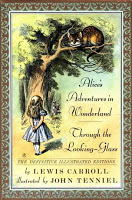 I first encountered Alice in Wonderland by Lewis Carroll (aka Charles Lutwidge Dodgson) in the movie theatres courtesy of Mr. Walt Disney. It wasn’t until I was 15 or so that I actually read the novel. I doubt there are many who read this post that would not know the basics of this classic. It was originally a story to Alice Pleasance Liddell and Edith Mary Liddel during a five mile rowboat voyage. But do you know that the handwritten manuscript was really entitled Alice’s Adventures Under Ground? Another bit of trivia is that the illustration of the dodo is a takeoff of Dodgson? Because of his stutter the author sometimes pronounced his last name of Dodo-Dodgson.
I first encountered Alice in Wonderland by Lewis Carroll (aka Charles Lutwidge Dodgson) in the movie theatres courtesy of Mr. Walt Disney. It wasn’t until I was 15 or so that I actually read the novel. I doubt there are many who read this post that would not know the basics of this classic. It was originally a story to Alice Pleasance Liddell and Edith Mary Liddel during a five mile rowboat voyage. But do you know that the handwritten manuscript was really entitled Alice’s Adventures Under Ground? Another bit of trivia is that the illustration of the dodo is a takeoff of Dodgson? Because of his stutter the author sometimes pronounced his last name of Dodo-Dodgson.
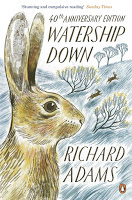 Watership Down by Richard Adams is an anthropomorphised novel featuring rabbits as the main characters. Adams creates an entire world with myths, politics, romance and language. Like Carrol, the novel originated as a story told to his children during a trip. This was Adams first novel and was initially rejected by several publishers. Little did those publishers know that it would go onto win the annual Carnegie Medal, the annual Guardian Prize and several other book awards! It was also adapted into an animated film in 1978 and a television series which ran from 1999 to 2001. It took Adams 25 years to complete a sequel entitled Tales from Watership Down, which is a collection of 19 short stories featuring El-ahrairah and the rabbits of the warren.
Watership Down by Richard Adams is an anthropomorphised novel featuring rabbits as the main characters. Adams creates an entire world with myths, politics, romance and language. Like Carrol, the novel originated as a story told to his children during a trip. This was Adams first novel and was initially rejected by several publishers. Little did those publishers know that it would go onto win the annual Carnegie Medal, the annual Guardian Prize and several other book awards! It was also adapted into an animated film in 1978 and a television series which ran from 1999 to 2001. It took Adams 25 years to complete a sequel entitled Tales from Watership Down, which is a collection of 19 short stories featuring El-ahrairah and the rabbits of the warren.
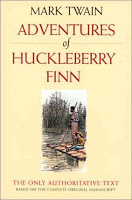 The Adventures of Huckleberry Finn by Mark Twain is now considered a children’s book now but the themes are definitely adult: slavery, child abuse, alcoholism, etc. Published in the U.K. in 1884 and the U.S. in 1885 it is the first major American work to be written in vernacular English. It is a satire of the southern antebellum society. It still creates controversy to this day due to its perceived use of racial stereotypes and language.
The Adventures of Huckleberry Finn by Mark Twain is now considered a children’s book now but the themes are definitely adult: slavery, child abuse, alcoholism, etc. Published in the U.K. in 1884 and the U.S. in 1885 it is the first major American work to be written in vernacular English. It is a satire of the southern antebellum society. It still creates controversy to this day due to its perceived use of racial stereotypes and language.
 Clockwork Orange by Anthony Burgess was something that I was made to read in high school, but I loved it. It has been listed as one of Time Magazines 100 best English language novels since 1923, and Modern Library and its readers listed it as one of the 100 best English-language novels of the 20th century. Burgess created a whole new slang language for this novel, which added to the appeal. Burgess intended the novel to have 21 chapters, as this is considered the age of maturity. But American publications stop at chapter 20, stating that this is a more realistic ending. Read it yourself to find out.
Clockwork Orange by Anthony Burgess was something that I was made to read in high school, but I loved it. It has been listed as one of Time Magazines 100 best English language novels since 1923, and Modern Library and its readers listed it as one of the 100 best English-language novels of the 20th century. Burgess created a whole new slang language for this novel, which added to the appeal. Burgess intended the novel to have 21 chapters, as this is considered the age of maturity. But American publications stop at chapter 20, stating that this is a more realistic ending. Read it yourself to find out.
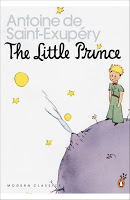 The Little Prince by Antoine de Saint-Exupery is considered a children’s book written for grownups.. Often assigned in school for French lessons, the language is poetic. It is the 3rd most translated book in the world and was voted the best book of the 20th century in France. It has been translated into more than 250 languages and dialects, as well as braille. It sells nearly two million copies a years and has become one of the best-selling books ever published. This magical fantasy can be read on many different levels and provides food for thought for readers of all ages. My favourite line (and there are many) from this novel is “One sees clearly only with the heart. What is essential is invisible to the eyes”.
The Little Prince by Antoine de Saint-Exupery is considered a children’s book written for grownups.. Often assigned in school for French lessons, the language is poetic. It is the 3rd most translated book in the world and was voted the best book of the 20th century in France. It has been translated into more than 250 languages and dialects, as well as braille. It sells nearly two million copies a years and has become one of the best-selling books ever published. This magical fantasy can be read on many different levels and provides food for thought for readers of all ages. My favourite line (and there are many) from this novel is “One sees clearly only with the heart. What is essential is invisible to the eyes”.
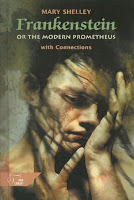 Frankenstein by Mary Shelley is something that I saw as a movie long before I read the novel. I always felt sorry for the monster. In my mind the true monster was his creator, Dr. Frankenstein. Shelley wrote the novel as a challenge between herself, Percy Shelley, Lord Bryon and John Polidori on who could write the best horror story. It is concerned one of the first true science fiction stories.
Frankenstein by Mary Shelley is something that I saw as a movie long before I read the novel. I always felt sorry for the monster. In my mind the true monster was his creator, Dr. Frankenstein. Shelley wrote the novel as a challenge between herself, Percy Shelley, Lord Bryon and John Polidori on who could write the best horror story. It is concerned one of the first true science fiction stories.
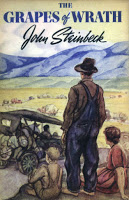 Grapes of Wrath by John Steinbeck is a realist novel that won the National Book Award and Pulitzer Prize for fiction. It was prominently cited when Steinbeck was awarded the Nobel Prize in 1962. Set in the Great Depression, the novel focuses on the Joad Family. They are driven from their Oklahoma home and travel to California, the land of milk and honey of their dreams. Reality comes crashing down on them, along with thousands of Okies who made that journey.
Grapes of Wrath by John Steinbeck is a realist novel that won the National Book Award and Pulitzer Prize for fiction. It was prominently cited when Steinbeck was awarded the Nobel Prize in 1962. Set in the Great Depression, the novel focuses on the Joad Family. They are driven from their Oklahoma home and travel to California, the land of milk and honey of their dreams. Reality comes crashing down on them, along with thousands of Okies who made that journey.
As with all great novels each of these works has been made into films. But beware if you “cheat” and watch these great works of literature: film will never be able to recreate the experience of reading the great words.


